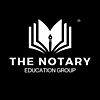Flyers, Business Cards, Postcards, and Brochures – How to Use Them the Right Way
Introduction
Marketing materials are not one-size-fits-all. Each piece of stationery—business cards, flyers, postcards, and brochures—has its own role. The mistake many business owners make is cramming too much information on one item or not enough on another. The key is knowing what each format is designed to do and how to use it correctly.
Business Cards: Your First Impression
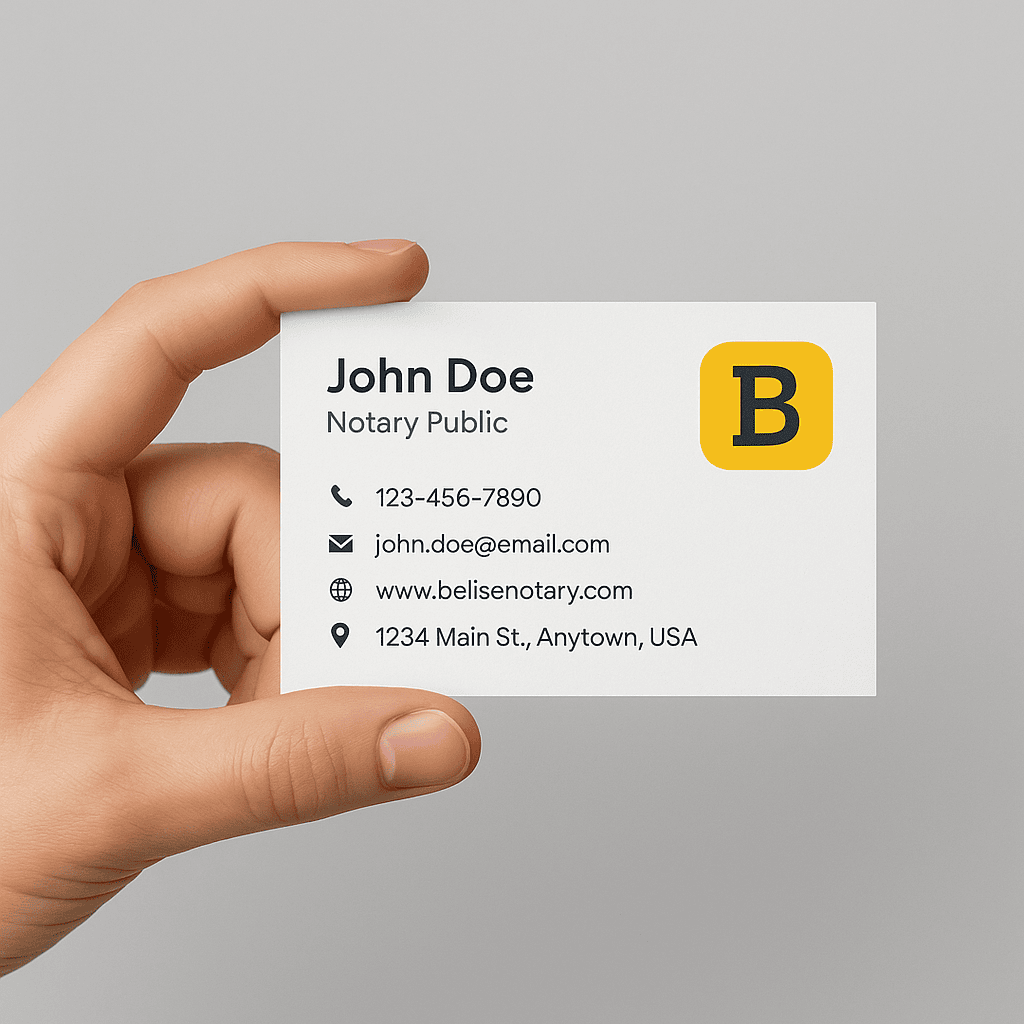
Your business card should be short and sweet, giving potential clients just enough to know who you are and how to reach you.
Include:
Name, title, business name/logo
Contact info (phone, email, website)
Optional: QR code to booking page or website
Purpose: A business card is your professional handshake.
Flyers: The Educator
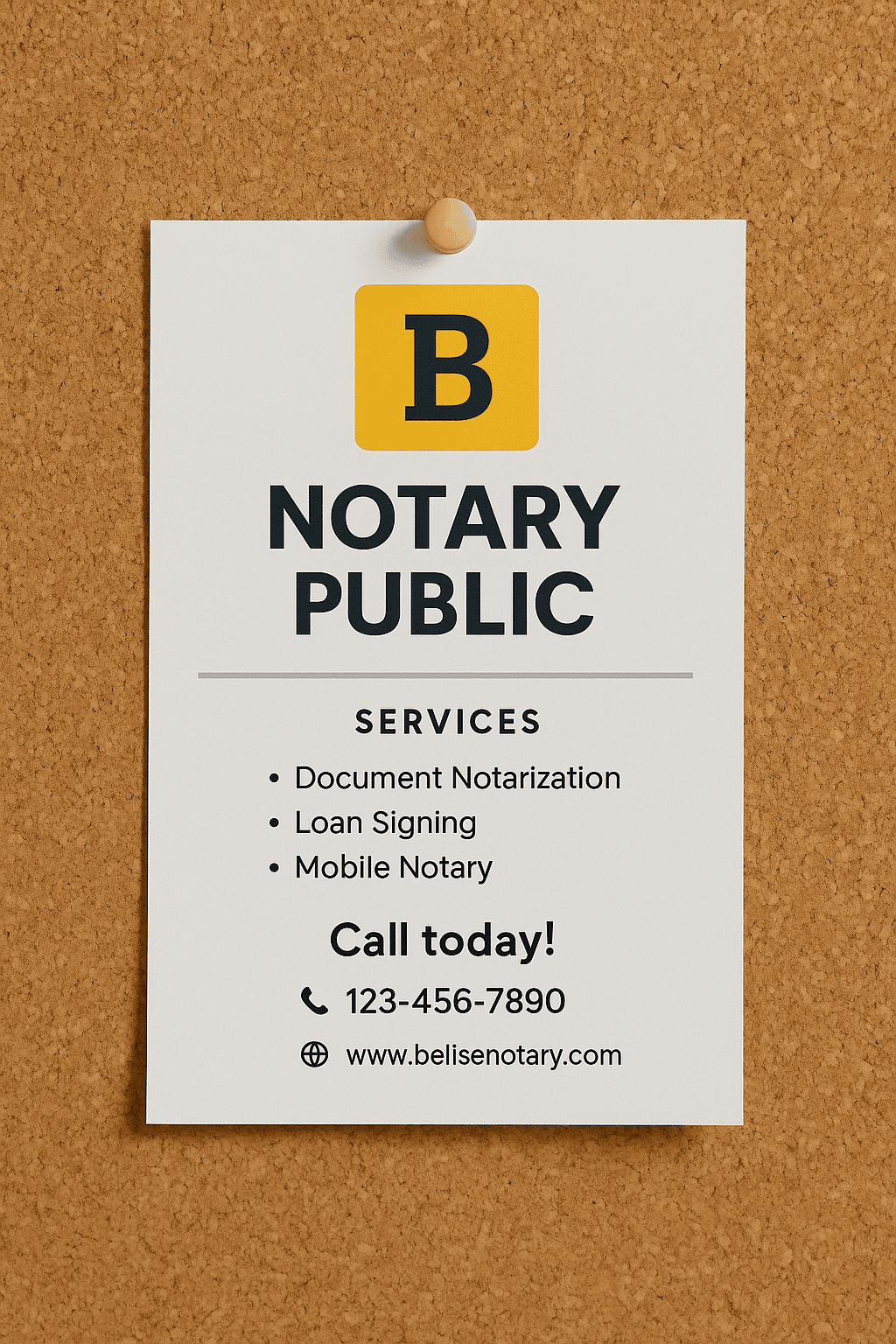
Flyers allow you to go into more detail about your services, events, or promotions.
Include:
A strong headline
Quick service breakdowns
Images/icons to support the message
A call-to-action
Best Use: Handouts at events, inserts in packages, or community posting.
Purpose: A flyer should tell your audience what you do, why it matters, and how they can reach you.
Postcards: The Messenger
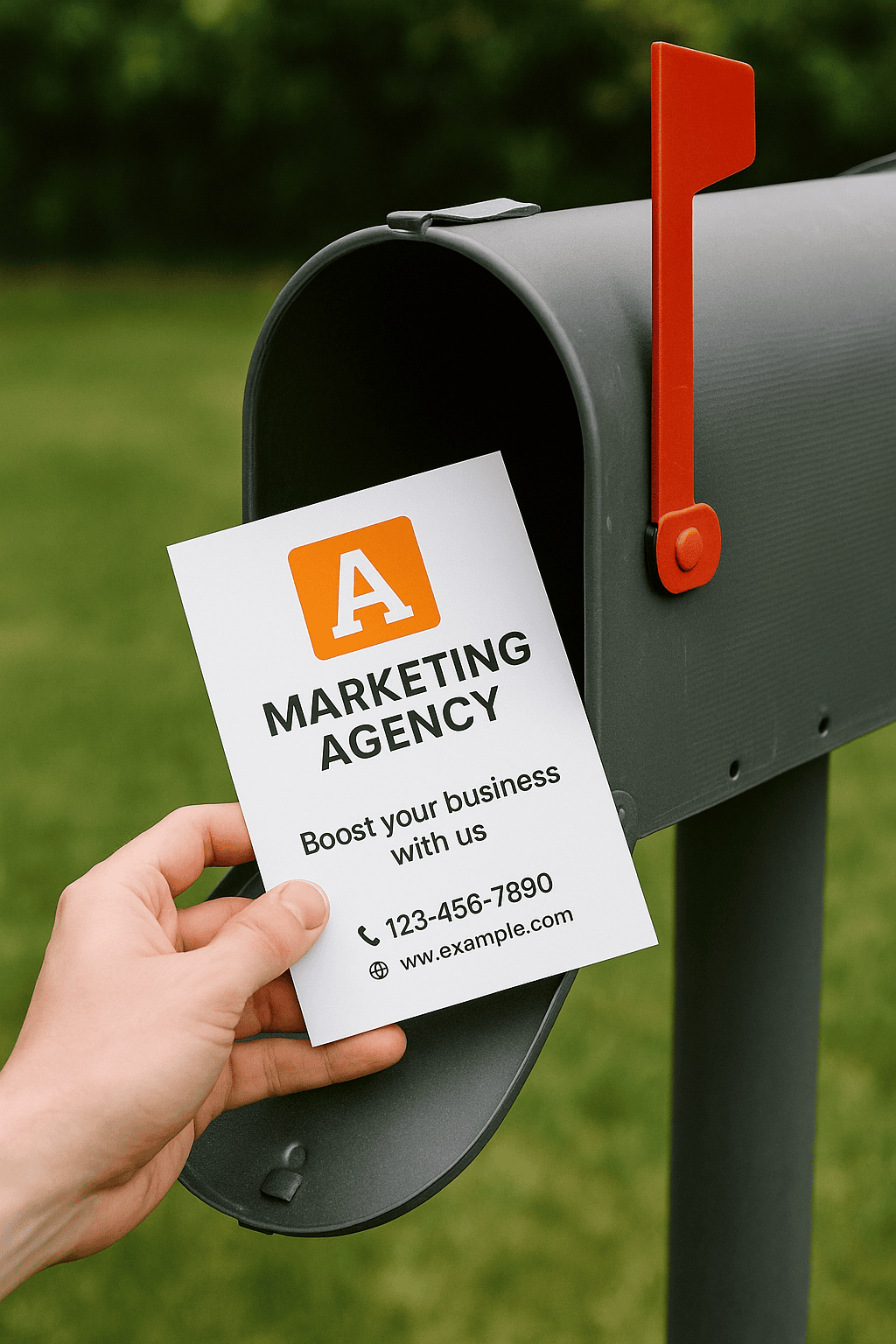
Postcards are small but powerful for direct outreach.
Include:
One bold headline
A strong image or brand visual
Short and persuasive text
Contact details/website
Best Use: Direct mail campaigns and special offers.
Purpose: To grab attention quickly and drive immediate action.
Brochures: The Storyteller
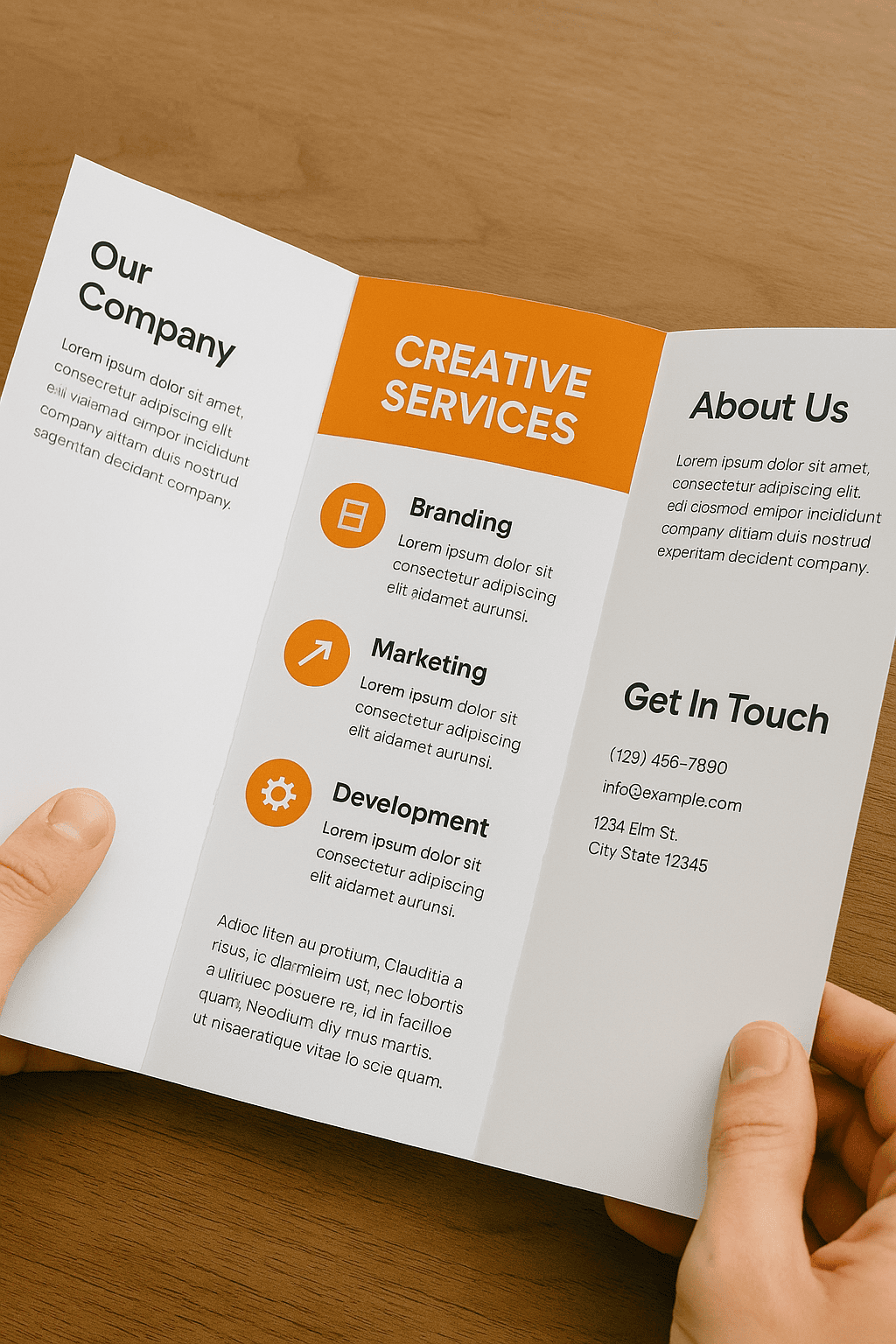
Brochures go deeper than any other piece of marketing material. They give your audience space to learn more about your business, services, or products in a structured way.
Include:
Front Cover: Business name/logo and an engaging title
Inside Panels: Key services, benefits, testimonials, pricing, or even a short FAQ
Back Panel: Contact details, website, booking information, and social media
Best Use: Networking events, client meetings, trade shows, or leaving behind after an appointment.
Purpose: A brochure builds trust and provides answers even when you’re not present.
Brochure Layout Tips
Tri-Fold Brochure (most common):
Six panels (three on the front, three on the back).
Best for presenting step-by-step information or dividing services into clear sections.
Works well when you want to guide readers through a logical flow (like “Who We Are → What We Do → How to Contact Us”).
Bi-Fold Brochure:
Four larger panels.
Best for showcasing visuals, such as property photos, product images, or service highlights.
Works well when you want fewer words and more emphasis on branding and visuals.
Booklet-Style Brochure:
Multi-page, stapled format.
Best for businesses with a wide range of services or detailed product lines.
Works well for catalogs or educational resources.
Design Advice:
Use white space to keep the brochure easy to read.
Include high-quality photos and your brand colors.
End with a clear call-to-action (ex: “Book your appointment today at belisenotary.com”).
Conclusion
Each piece of marketing stationery has its lane:
Business cards = contact info
Flyers = quick information
Postcards = instant action
Brochures = detailed storytelling
When used together, they create a layered, professional marketing presence that attracts attention and communicates effectively.
